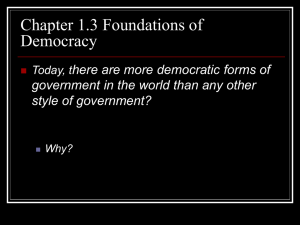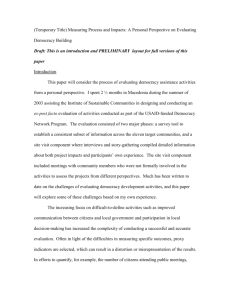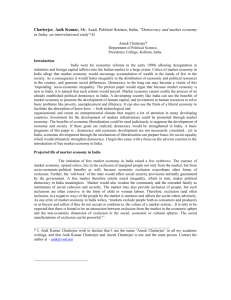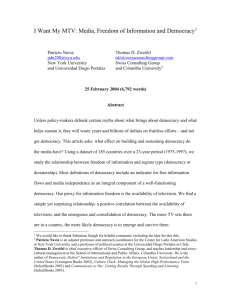Session 2.10
advertisement
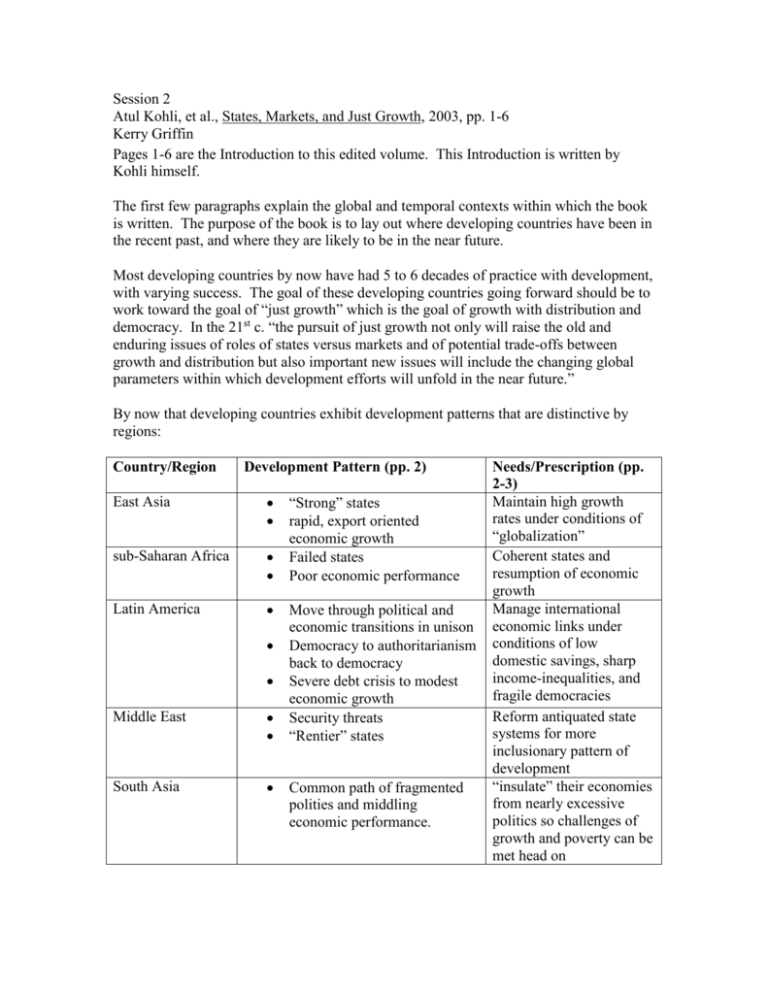
Session 2 Atul Kohli, et al., States, Markets, and Just Growth, 2003, pp. 1-6 Kerry Griffin Pages 1-6 are the Introduction to this edited volume. This Introduction is written by Kohli himself. The first few paragraphs explain the global and temporal contexts within which the book is written. The purpose of the book is to lay out where developing countries have been in the recent past, and where they are likely to be in the near future. Most developing countries by now have had 5 to 6 decades of practice with development, with varying success. The goal of these developing countries going forward should be to work toward the goal of “just growth” which is the goal of growth with distribution and democracy. In the 21st c. “the pursuit of just growth not only will raise the old and enduring issues of roles of states versus markets and of potential trade-offs between growth and distribution but also important new issues will include the changing global parameters within which development efforts will unfold in the near future.” By now that developing countries exhibit development patterns that are distinctive by regions: Country/Region Development Pattern (pp. 2) East Asia sub-Saharan Africa Latin America Middle East South Asia “Strong” states rapid, export oriented economic growth Failed states Poor economic performance Move through political and economic transitions in unison Democracy to authoritarianism back to democracy Severe debt crisis to modest economic growth Security threats “Rentier” states Common path of fragmented polities and middling economic performance. Needs/Prescription (pp. 2-3) Maintain high growth rates under conditions of “globalization” Coherent states and resumption of economic growth Manage international economic links under conditions of low domestic savings, sharp income-inequalities, and fragile democracies Reform antiquated state systems for more inclusionary pattern of development “insulate” their economies from nearly excessive politics so challenges of growth and poverty can be met head on The Introduction tells us that the book proceeds to explore common concerns of all developing countries, while emphasizing special regional needs. Each chapter addresses each of the following topics: States, markets, and growth (pp. 3-4) To what extent states should intervene in markets to promote growth is the master debate. The scholarly and policy communities have swung back and forth on this issue: 1950s-1960s – general consensus that pervasive “market imperfections” necessitate state intervention for growth promotion. 1980s – shift to “state imperfections”. The “Washington Consensus” argues for “getting prices right, openness and minimal state intervention” Today – continued recognition of the importance of macroeconomic stability and of getting some prices right. Also, growing recognition that sound policy requires an effective state and effective state intervention is needed to promote economic growth (to build infrastructure, for an educated and healthy workforce, and technological know-how) States, markets and distribution (pp. 4) “How much emphasis should be placed by development strategies on deliberate redistribution and/or on poverty alleviation are, again, old and enduring questions. Tolerance of poverty and inequality also appears to wax and wane in the scholarly and policy communities, not to mention within regions and countries.” Evidence linking poverty levels with economic growth is stronger than evidence linking inequality with economic growth. Steady growth helps alleviate poverty, with some exceptions, highlighted by the Human Development Report of the UNDP. This suggests that patterns of growth also matter, and Public policy intervention for structuring growth patterns will remain significant in translating gains in national production into better living conditions for all. Globalization (pp. 4-5) This is a new buzzword in development discussions and has taken on an idealogical quality. There are some idealogical claims that globalization is pervasive, inevitable, and offers benign opportunities for all but those who refuse to accept it. The truly significant changes in globalization have come about recently in the realm of international finance and rapid movement of money through portfolio investments. Some regions of the developing world – Latin Amer. and Asia – are more likely to be able to take advantage of this than sub-Saharan Africa or South Asia. Given globalization, developing countries are constrained in choosing their own development paths to the extent that well-organized states may feel less constrained than states with poorly functioning states, low domestic-savings rates, or both. Democracy (pp. 5-6) Democracy is a valued end in the process of development, but its contributions to growth remain unclear. Democracy’s value is mainly political, facilitating freedom of expression, minimizing arbitrary and dictatorial rule, and holding the ruling elite accountable. “The “third wave” of democracy has thus been fuelled by the political urge of citizens worldwide to have some say in how they are governed.” However, the Middle East has not shared the spread of democracy, and some new democracies set up in other developing countries have not provided good government and some countries – such as Pakistan – have reverted to authoritarian rule. Democracy cannot reconcile growth and distribution any better than non-democratic forms of government. Democracy creates secure property rights and a favorable investment climate, however new democracies are not always stable, and more important, they allow interest groups to mold policy that may not be the best for economic growth. We are referred to chapter 2 for a discussion, given the importance of democracy in the pursuit of just growth. A theme of special importance here is the role of political parties in stabilizing new democratic governments and in facilitating economic development.



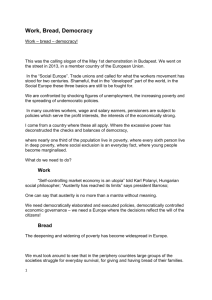
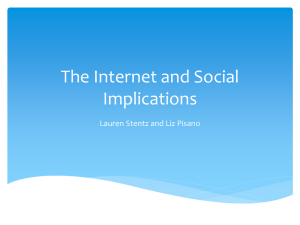
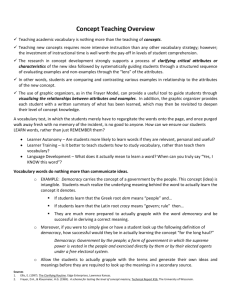
![“The Progress of invention is really a threat [to monarchy]. Whenever](http://s2.studylib.net/store/data/005328855_1-dcf2226918c1b7efad661cb19485529d-300x300.png)
